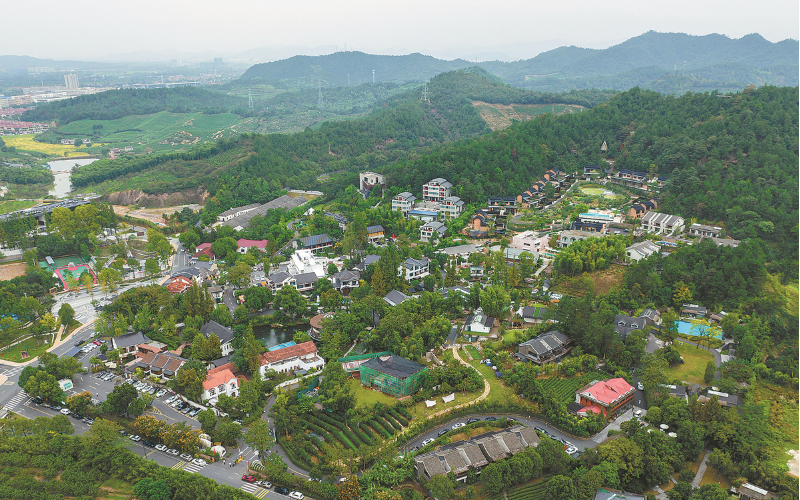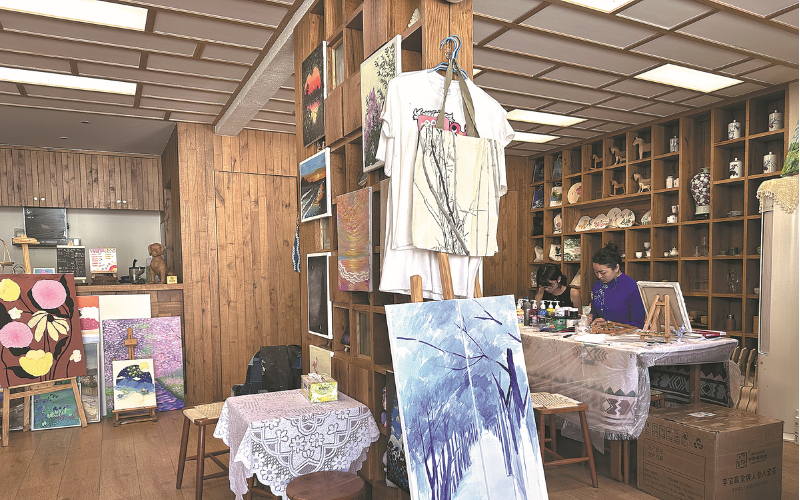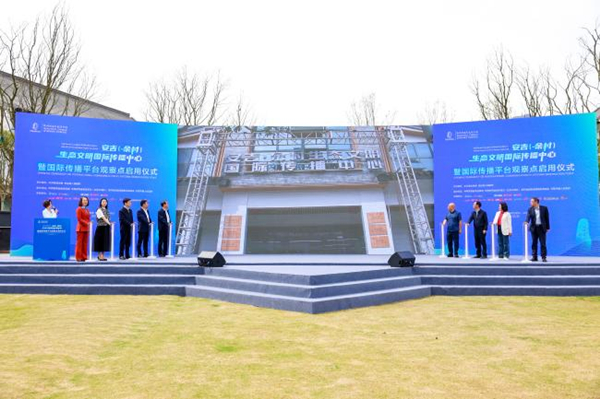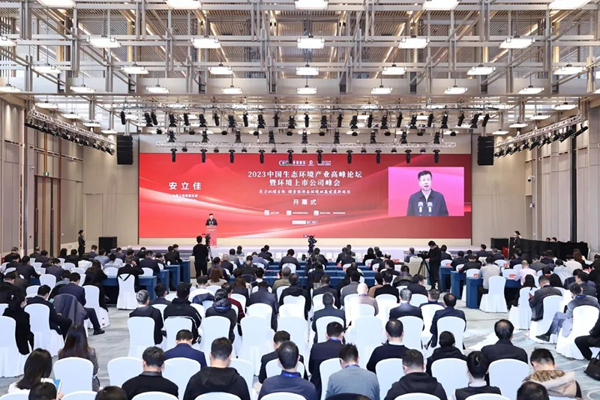Renovated homestays bring new vitality to old 'hollow' villages

A panoramic view of the Xiao Yin Half-day Village in Anji, Zhejiang province. [Photo provided to China Daily]
As villagers have migrated to cities for work and education, some old settlements have gradually fallen into disrepair in recent years, becoming what are aptly referred to as "hollow villages".
More than a decade ago, Hengshanwu, a village in Anji county, Zhejiang province, was home to just 34 households of seniors.
However, Chen Gu, an architect who grew up near the village, put forward the idea of building a homestay cluster when he visited Hengshanwu in 2013, aiming to transform it into a collection of homestays, which was a new concept at the time.
"Rural life will be the greatest luxury in the future," he said. Chen worked in Hangzhou, Zhejiang's capital, and Shenzhen, Guangdong province, for many years. Later, he decided to move his studio back to the countryside.
When he visited the village, Chen recalled his childhood, which he spent playing and climbing trees with friends on the hill in front of his home. "Our house had a courtyard, and my brother and I used to spend time there gazing at a curtain of rain. Many city dwellers nowadays might never understand the feeling of listening to the rain," he said.

An inside view of a shop opened by design graduates in the village. YAN DONGJIE/CHINA DAILY
During the planning and design stage for the construction of the homestays, he began advocating the preservation of the village's original structure, which led to the improvement and renovation of the settlement, based on the foundation of the old village.
"Each old tree, house or rural path has its own story. As long as we are able to preserve them, we will never demolish them," he said, adding that he hoped people could really slow down, stop and stay in the village.
Chen believes that homestay clusters are a new industry for rural operations. When it comes to rural renovations, there shouldn't be excessive demolitions and reconstructions because the layout of rural industries and environmental preservation are important.
Taking the rainy climate of the southern region into account, he designed houses that utilized local palm tree resources, so the leaves were used to cover the eaves, creating a rain curtain landscape on inclement days.
"This resonated with my deepest childhood memories," he said.
In 2016, the 'Xiao Yin Half-day Village' was completed and put into operation. The name means "addicted to a short stay, stealing a half-day of leisure". The construction area was 13,500 square meters, with total investment of 130 million yuan ($17.8 million).
Last year, the village homestays received more than 350,000 visitors, and the combined income rose to over 7.9 million yuan.
At the village entrance, a signboard displays four characters that read 'Win-Win Cooperation'; the characters refer to the street, the village collective, the operating company and the villagers.
The residents' incomes come from rent and yearly dividends, as well as wages from homestay jobs such as running businesses, cooking, cleaning and security work. This not only solves the unemployment problem but also encourages more people to return to their hometowns and start businesses or settle down.
"At present, there is one homestay within the project that is operated by a local resident, and more than 30 villagers work there," Chen said. "So far, 19 homestays (operated by nonlocals) have opened in the village, offering 243 guest rooms in total."
Thanks to the initial scale of the homestay cluster, visitors now have a place to stay after sightseeing tours. "Keeping people here allows the village to flourish," said Cai Mingfu, secretary of Hengshanwu's Party committee.
Later, construction began of a commercial street at the village entrance, with restaurants, supermarkets, barbecues, milk tea outlets and coffee shops taking up the space. Local agricultural produce, such as tea, bamboo shoots and eggs, are also sold on the street as secondary sales commodities.
Chen recalled that some visitors from France said the village reminded them of the rural areas in the south of their country. "The rural areas in the south of France are among the most beautiful in Europe, so that is great praise to me," Chen said.
There are now many homestay villages in various provinces in China, such as Weizhai village in Suzhou, Anhui province, Qibie village in Dechen Tibet autonomous prefecture, Yunnan province, and Bohou village in Sanya, Hainan province.
Enjoying a village getaway has become the kind of weekend that many city dwellers enjoy.





